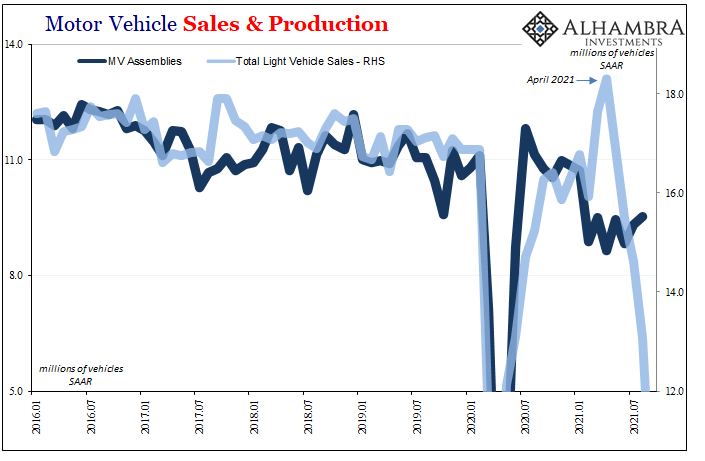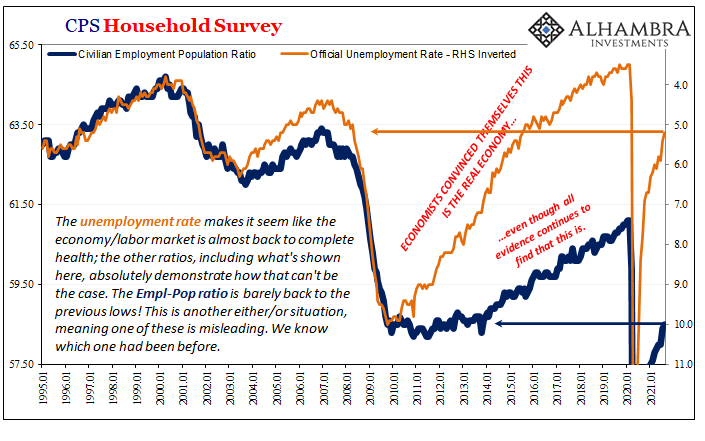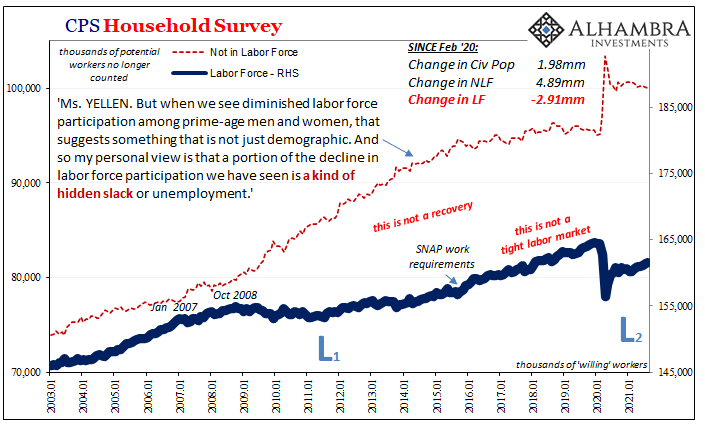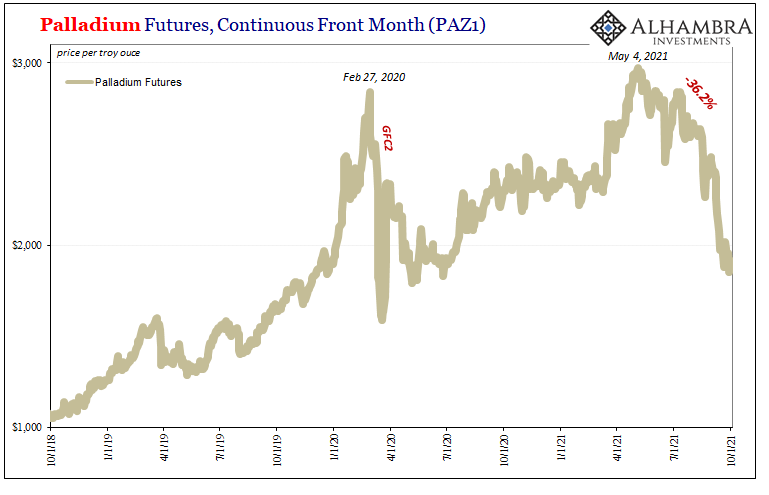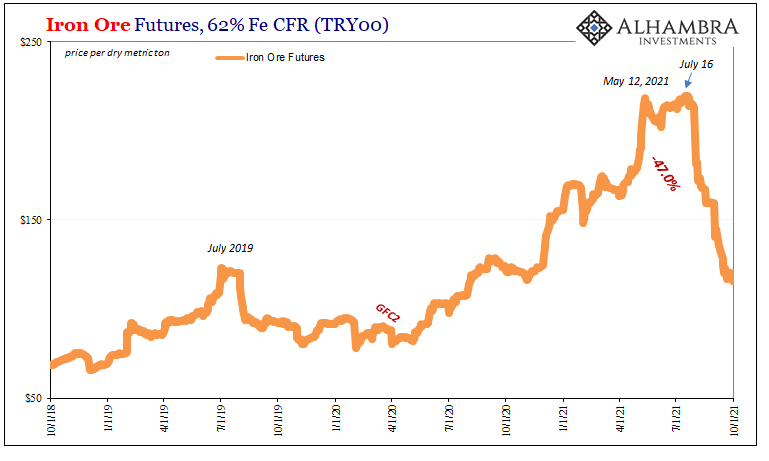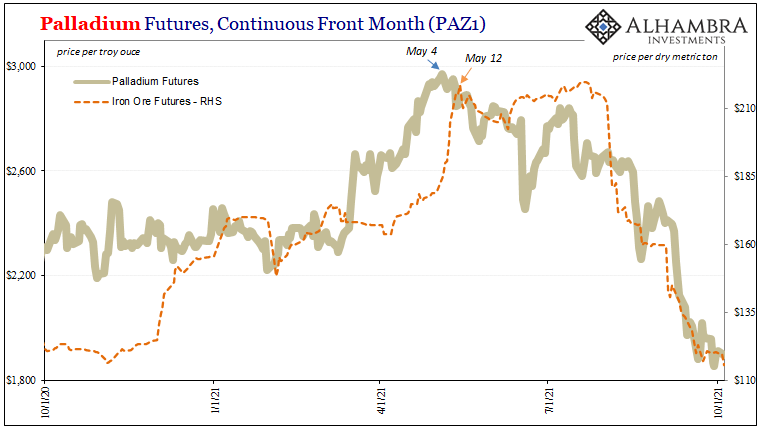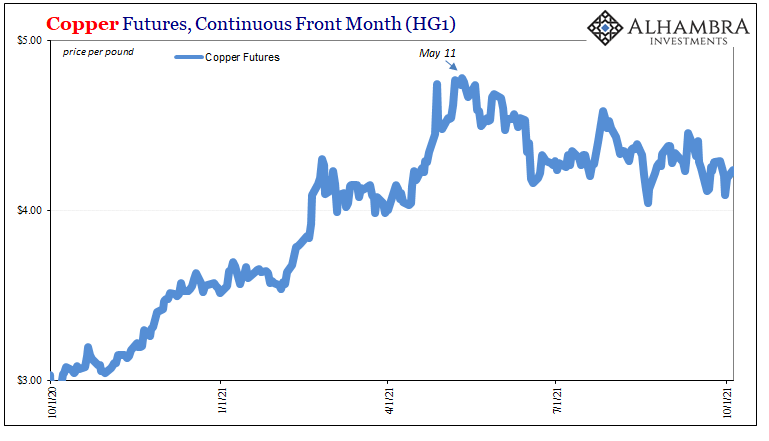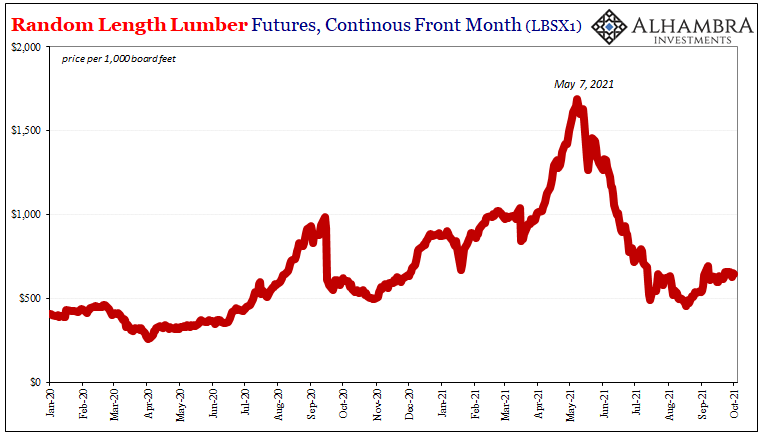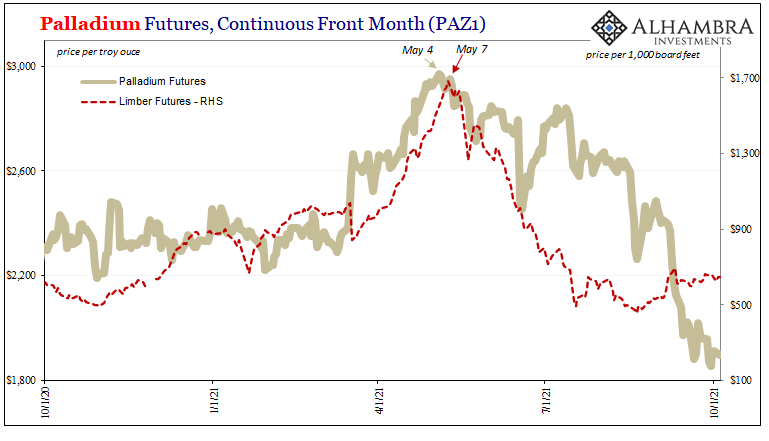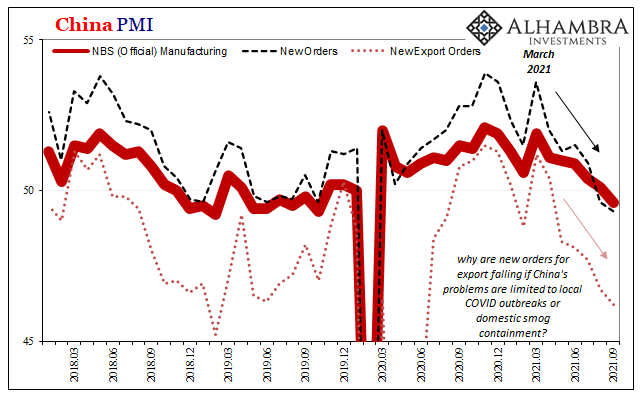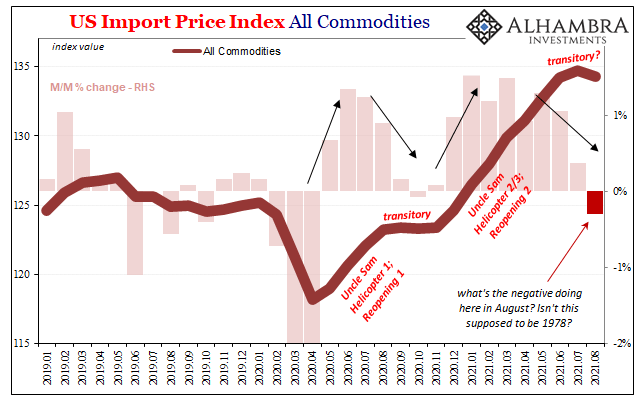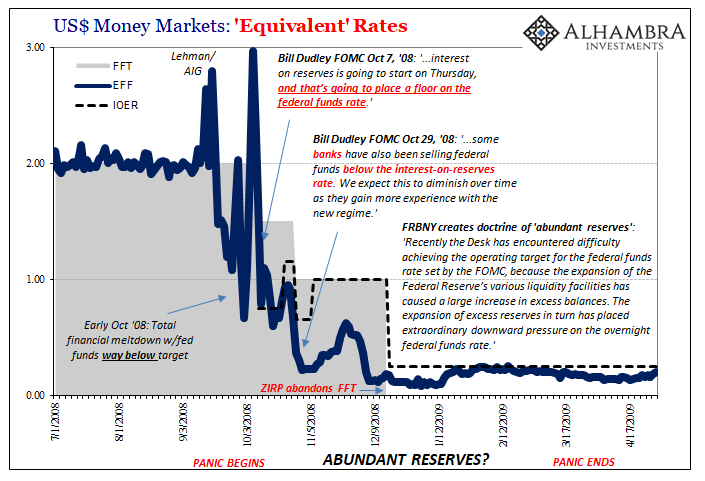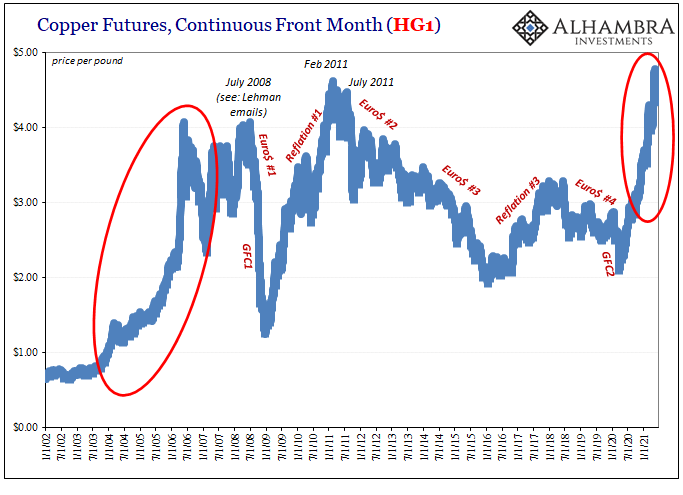Last night, Autodata reported its first estimates for September auto sales in the US. According to its own as well as those compiled by the Bureau of Economic Analysis (the same government outfit which keeps track of GDP), vehicle sales have been sliding overall ever since April. For a couple months in the middle of Uncle Sam’s helicopter-fed frenzy, the number of vehicle units had surged to a high of more than 18 million (seasonally-adjusted annual rate) in both datasets. It’s been all downhill ever since, the numbers dropping to just barely 13 million (again, both) during August. For September, though, Autodata’s newly released figure was an astoundingly low 9.66 million. How low is that? COVID-level low; bottom of the Great “Recession” territory. Off the (my)
Topics:
Jeffrey P. Snider considers the following as important: 5.) Alhambra Investments, automobiles, China, commodities, Copper, currencies, Deflation, economy, Featured, Federal Reserve/Monetary Policy, inflation, Iron Ore, lumber, Markets, newsletter, Palladium, vehicle sales
This could be interesting, too:
Nachrichten Ticker - www.finanzen.ch writes Die Performance der Kryptowährungen in KW 9: Das hat sich bei Bitcoin, Ether & Co. getan
Nachrichten Ticker - www.finanzen.ch writes Wer verbirgt sich hinter der Ethereum-Technologie?
Martin Hartmann writes Eine Analyse nach den Lehren von Milton Friedman
Marc Chandler writes March 2025 Monthly
| Last night, Autodata reported its first estimates for September auto sales in the US. According to its own as well as those compiled by the Bureau of Economic Analysis (the same government outfit which keeps track of GDP), vehicle sales have been sliding overall ever since April. For a couple months in the middle of Uncle Sam’s helicopter-fed frenzy, the number of vehicle units had surged to a high of more than 18 million (seasonally-adjusted annual rate) in both datasets.
It’s been all downhill ever since, the numbers dropping to just barely 13 million (again, both) during August. For September, though, Autodata’s newly released figure was an astoundingly low 9.66 million. How low is that? COVID-level low; bottom of the Great “Recession” territory. Off the (my) chart. |
|
| No worries, it’s just chips. That’s what everyone says.; nothing more to see here.
The shortage of semiconductors is certainly weighing on automakers who can’t finish off their products without them. This bottleneck continues to choke off inventory, as the earlier spike in sales gifted by the government’s “stimulus” tore through whatever limited stock dealers (and some wholesalers) had on hand. Unable to keep up production without sufficient semis, overall inventory of available-for-sale cars and trucks is at historic lows. Without much in stock, few units available to sell, there can’t be much for sales. |
|
| Thus explains, apparently, September’s huge drop and retailing miss.
But is that all? Chips, yes, yet there are more fundamental questions arising over on the demand side. More generally, first, no more helicopters. Second, a lot less unemployment payments (benefits cliff). Last and most of all, none of those things appear to have generated anything like a full recovery; meaning, the underlying economy which got whacked by the coronavirus restrictions and GFC2 during 2020 may really have been durably perhaps permanently damaged and in the same horrific way as the 2008 crisis had (see: labor force). |
|
| This is a (more than) possibility which wouldn’t just apply to the US segment of the global system. Outside the US goods sector, there’s been consistently much less to support either for the rebound or the more positive narrative surrounding it. Quite simply, apart from American consumption of especially durable goods (see: services) it has consistently remained quite ugly for some reason(s).
To that end, start with commodities immediately related to autos; those like palladium. This silvery metal is closely tied to the manufacture of combustion vehicles, used largely for environmental solutions put onto them (along with platinum). It’s been the familiar story in terms of price, with supply problems (and Chinese hoarding) in getting the commodity out of the ground running against a much faster rebound in demand. Palladium prices naturally sky-rocketed to just about $3,000 per troy ounce at their peak in early May 2021. After May, it is shaping up to be a nearly equally epic crash; the front month price is down almost 40% since that top. |
|
| Chip shortage strikes again! Without semiconductors, carmarkers aren’t going to be able to make nearly as many cars as they wanted or expected, leaving overall production limited. Unless the chip problem is solved soon, which doesn’t appear as likely, then the use for palladium might be constrained so long as this other supply bottleneck hampers automakers.
But palladium prices aren’t the only commodity to suffer. How about iron? Another of the “supercycle” darlings, the futures prices for iron ore has likewise plummeted; even more than palladium. Down almost 50% from its high, it may be good that China’s markets are closed this week for their National Golden Week celebrations. Iron, of course, is used to make steel and the Chinese have been cracking down on pollution at the same time as rationing electricity. |
|
| Where palladium’s plunge has been excused under microchips and autos, iron’s is being blamed on Communist politics.
Yet, there’s an uncomfortable similarity between the two: |
|
| While iron prices had managed to rebound after May, unlike palladium, still the same general outline: parabolic price increased up to early May and then generally sideways (higher for iron, lower for palladium) thereafter until the summer really heated up. July, August, then September in both were similarly awful.
There are more; copper likewise topped out in early May, too. Unrelated to semis, not as directly subject to Chinese electrical rations, Dr. Copper has been substantially lower going back to that same spot on 2021’s calendar. While the decline isn’t in the same neighborhood as either iron or palladium’s, the similarities are obvious enough anyway. |
|
| One commodity which has performed even worse than those first two is another former darling once commonly asserted as the inflationary warning of all inflationary warnings: lumber. Except, nowadays its anti-darling status has absolutely nothing to do with any of those other factors supposedly influencing iron, copper, or palladium. Yet: | |
| There are definite semi problems in autos, and these absolutely have been spilling over into physical commodity schedules and fundamentals. However, while that may seem to be the only factor commonly cited for price behavior, these other commodities and their globally synchronized behavior cannot help but strongly hint at “something” else besides chips, specifically, and supply constraints more broadly.
Blinded by the dazzling “stimulus” produced in the US as well as in other places, too little emphasis was left to peering behind the fuzziness of neo-Keynesianism to more thoroughly understand the true macro potential for when the world got to the other side of all that government intervention. Everyone seems to have assumed there wouldn’t be anything to trouble global demand. Inflation to the moon forever! |
|
Somewhere around May, in commodities as well as bonds, these markets did seem to take a longer look – and do not appear to be sanguine about what was found out. As one metals market observer admitted at the end of August, the world was told it would all just go to plan:
One reason for swinging at least toward demand uncertainty had been delta COVID; the summer was filled with media sensationalism about its rabid dangers. That’s on the downswing, too, now, which then proposes more durable uncertainty than what’s attributable to what’s left of the pandemic. Something is going on here which defies in time and substance all the common explanations. It had been widely believed the US and global economy would fully recover at some point. Ironically, much of that belief was based on Uncle Sam on the one hand and Chairman Xi on the other. The former is proving more and more transitory by the month, by the week, while the latter was never in that category to begin with (Xi had even said so all along). Without hope for a rededicated China, and with fewer of the US federal government’s nickels floating freely around, while there are still supply issues present and they are causing some serious chaos and limiting potential, there may also be a growing realizing how as those fade they’ll be replaced and superseded by more serious, perhaps intractable problems with the world’s demand side. |
Tags: automobiles,China,commodities,Copper,currencies,Deflation,economy,Featured,Federal Reserve/Monetary Policy,inflation,Iron Ore,lumber,Markets,newsletter,Palladium,vehicle sales

